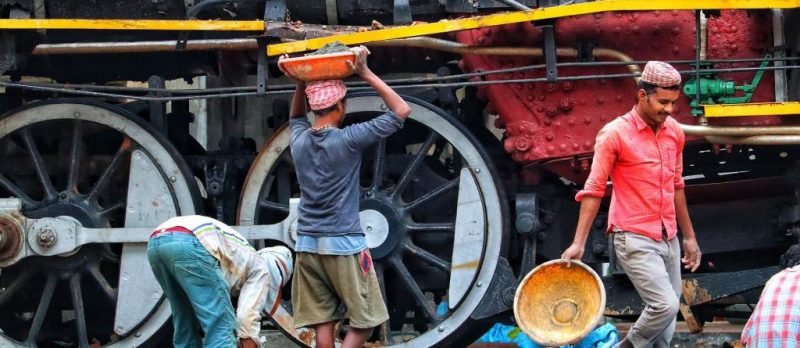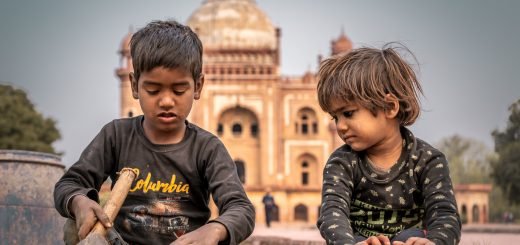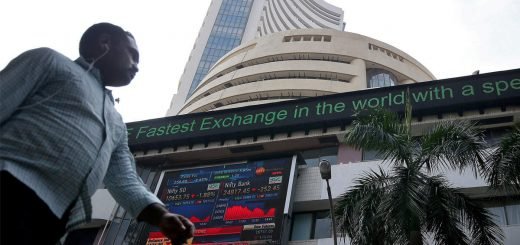Woes of the Informal Workforce in South Asia

Introduction
Covid-19 is an unprecedented crisis which has challenged the rich and poor alike. Surely, the impact could vary depending on the financial capabilities, but the risks and life of the poor are going to remain affected for a very long time. The nature of the crisis is so different from anything seen before that only a vaccine (that too supplied in sufficient quantity) can promise to take away the damage done till now. Nonetheless, there is a group of people who are certainly worse off than any other sector – the highest share of employment-generating the informal economy of the region. The South Asian region’s workforce is predominantly employed in the unorganised sector with little or no social security benefits along with no guarantee of employment even in normal times.
So when the times have changed, certainly those who were poor before the crisis are even more drowned into the river of woes. Top it with gender inequality and the whole region seems deep into the clutches of misery.

Unbiased Health Crisis, Discriminatory Economic Blow
Take, for example, the case of Bangladesh. The economic impact of the steps taken to deal with covid crisis has severely affected the labour force of the country. Even though the country has shown tremendous resilience in dealing with other natural disasters in the past along with their continuous efforts to fend themselves against the impact of the climate crisis, this one has blown the country’s economy. With around 10 million strength of informal labour force, the country is hard hit by the lockdown and social distancing measures imposed. World Banks’ estimates reveal a grim picture of the labour income in the country which is less than $5.90 for almost 85% of the population. Around 90 percent are in the informal sector and the rural inhabitants depend on remittances from the city which is equally devoid of work opportunities. There is neither any health insurance provision, paid leave, internet connectivity (which has helped people in the formal sector to resume work-from-home culture) which has sustained the workers of the formal sector nor is there any sufficient support provided by the government. The reasons are numerous why cant Bangladesh replicate the successful strategies deployed by other Asian neighbours, ranging from inability of a major section of the population to participate in mobile based surveys, low smartphone penetration (which helps in contact tracing through GPS), prevalence of stigma, low health budget, poor health infrastructure, etc.
Turning towards Nepal, Covid crisis came with the problem of stranded international labour migrants on the borders with India. Due to the presence of similar ethno-linguistic patterns, open borders with India, absence of stringent restrictions, lax rules, caste and gender discrimination in home country and lack of land holding, large number of workers from Nepal prefer to look for employment in Indian cities. 85 percent of the population is engaged in agriculture in Nepal and there is a heavy reliance on remittances received from the workers working in foreign countries (more than 28% of the GDP in 2017). Like the whole south-asian region, 90 percent of the workforce is in unorganised sectors without any social security net.
Similar is the case with Afghanistan where the economy is primarily dependent on aids & remittances from workers employed in Iran and Pakistan. While aids continued to fly during covid crisis, but as the situation is equally grim across the world, there is no certainty regarding these aids. 70 percent of the workforce is engaged in agriculture which contributes 30% of the GDP. With 72 percent of non-agricultural jobs, the situation of Pakistan is no better as this labour force contributes a third of its GDP and is facing a similar outcome.

India has an informal labour force which is around 90 percent of the total workforce. We all are very well aware of the migrant crisis which began in the month of March (post lockdown), closing of businesses, restrictions on house-helps in urban areas, halting of construction activities, etc. Though the government did a commendable job to keep the supply chain of essential commodities running, the fall of demand from a large workforce of the informal sector due to loss of job and future uncertainties (which led to savings instead of consumption) affected the economy.
In contrast, Bhutan has managed the covid crisis relatively better than the other countries of the region. More than 73 percent of the country’s workforce is involved in informal activities in commerce, agriculture, construction, manufacturing, transportation and services. These are primarily rural migrants with poor educational backgrounds and around 3/4th of this informal sector workforce is employed in agriculture only. The cultural bias and Gender inequality (a dominant characteristic of the south asian region) ensures that a majority of this informal agri-workforce is composed of women. There are restrictions imposed on cross-border trade which led to shortage of inputs and supplies thereby endangering the livelihoods of vendors and shopkeepers.
Space for more
In Nepal, the government came up with a set of over 800 types of job opportunities which can be provided to urban unorganised sector workers, named Work-for-relief program. Under this scheme, the relief packages are provided (with the help of local bodies) in the form of food (for those who can’t work) or fixed wage-for-work. This has not only created jobs for the workers hard hit by the lockdown of the economy but also expedited the development work. However, inefficiencies in the form of relief materials not being received by the intended beneficiaries have put a question mark on the efficacy of the step.
The ban on food imports in Bhutan was eventually lifted but the closing of the land border with India did not make any substantial difference due to the former move. However, this was perceived as an opportunity by the national government to take a step towards food self-sufficiency. Farmers & meat producers were encouraged to coordinate with concerned officials for uninterrupted supplies of inputs and raw materials needed without worrying about selling their produce. With 65 percent of the population employed in agriculture contributing 20 percent of the GDP, the reforms pushed now were actually long overdue. Bhutan’s heavy dependence on India for its food and meat imports has resulted in ignorance of the basic facilities like irrigation & supply chain connectivity in these sectors. It has much to learn from the organic farming leader of India, the state of Sikkim, which has similar climate as that of Bhutan.
The stimulus package announced by the government of Bangladesh was primarily aimed at bridging the finance gap of MSMEs and even that was criticised for being insufficient given the magnitude of the crisis. In a country with around 50 million of workers in the informal sector, the government decided to provide food aid through the existing social safety schemes network. Along with indirect efforts to retain liquidity in the system and ensure buoyancy of demand, the government needs to aggressively target the demand along with management of the supply side as well.

Gender discrimination, as prevalent in all spheres of life, comes to the fore during a crisis as well. A deep rooted problem when not taken care of during normal times, becomes even more severe during a crisis. Gender inequality in the workforce is a characteristic feature of the south asian region (as it is across the world) and the loss of jobs has been equally, and even more, felt by the women workers. Entering the workforce itself is a barrier for women labourers and once the job is lost, they need to go through the whole struggle again. Be it the urban household maids, construction labourers, the women vegetable vendors of Bhutan, the women landless farmers of India or even the home makers, all are facing increasing pressure of care-work along with no income source.
Supply side management along with demand side measures holds true for the South Asian region as a whole. The coronavirus is not going anywhere in the short-term but the effect of the measures taken to deal with it are going to linger around for a very long time. This fight can’t be won by the government alone and needs coordination & cooperation among public-private agencies. Fiscal deficits can be taken care of eventually but a hard and fast rule for fiscal prudence can’t do any good to a developing economy. The countries need to aggressively tackle the demand side problem along with the central banks. The region needs intra-regional cooperation keeping aside all other differences.


















